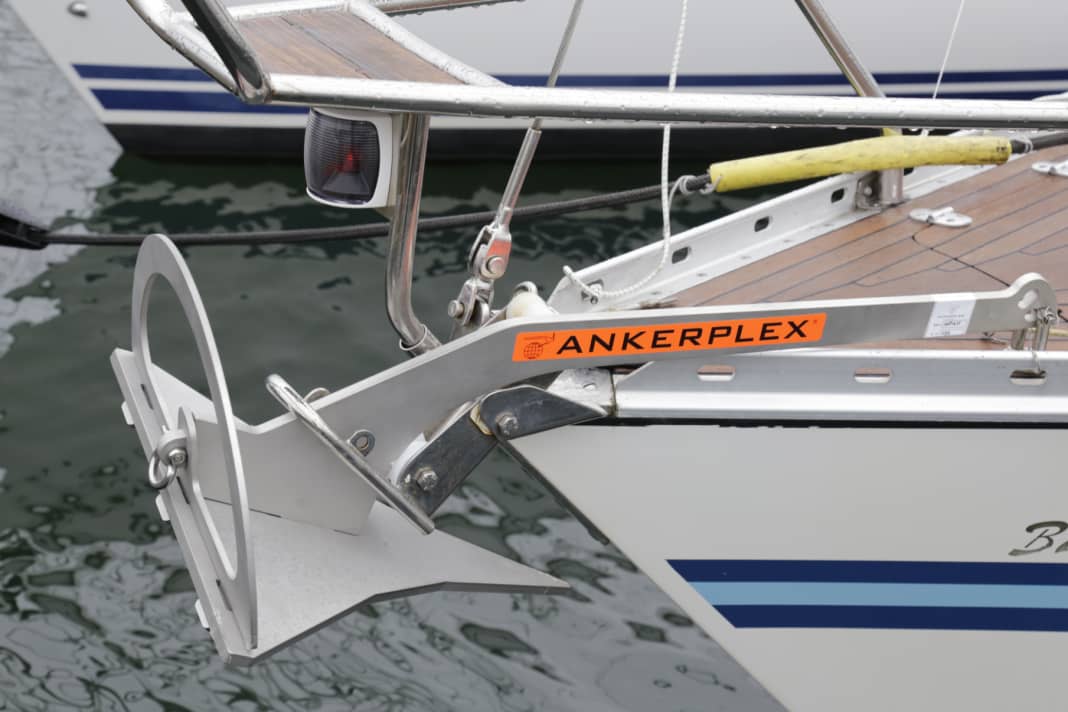Tried and tested: Two demountable anchors made of steel and aluminium put to the test






The Spanish company Ankerplex has a dismountable anchor in its programme. The base bar can be dismantled into three parts (shackle, pole, fluke) without tools. As the parts are all flat, the disassembled anchor can be stowed away to save space. There is also a rectangular bag. This makes it easy to stow the anchor in the bilge or in the depths of the forecastle. The ground anchor is available in two versions made of stainless steel and aluminium. The sizes range from 1 to 4, 6, 9, 14, 17 and 23 kilograms.
The special feature: The aluminium versions are available in the same sizes, but only weigh a fraction of the stainless steel versions. This means that the aluminium anchor in the 14-kilo class weighs only 6.1 kilograms, whereas the stainless steel version weighs 14.4 kilograms. In the manufacturer's size guide, the AKP 14ST (for steel) and AKP 14AL (for aluminium) models are recommended for boats from 33 to 39 feet. This includes all weather conditions between 10 and 11 metres and only normal conditions at 12 metres. The list does not show any differences in terms of materials. However, our test revealed clear differences in performance.
Anker test: What the two models have in common
For the test, we used a yacht just under 11 metres long and displacing 5.5 tonnes. This corresponds exactly to the usage profile recommended by the manufacturer for the anchor size. The anchoring ground was sand, so overall the conditions were ideal.
Both anchors are assembled in the same way: the shaft, fluke and bracket are plugged together. No tools are required for this. A shackle prevents everything from falling apart again. The line for the anchor buoy can also be attached here. Although the steel and aluminium versions have the same external dimensions, the material thicknesses are different. This means that the individual parts cannot be mixed. A steel fluke and aluminium shaft cannot be combined.
The manufacturer had also sent a bag for testing. This was also practical with some stabilising and padding cardboard. Without additional padding, however, it is too thin and completely misshapen. A thicker material and compartments for the individual parts would be nice.
1st attempt: AKP 14ST (steel)
The stainless steel Anchorplex 14 dropped to a depth of more than two metres. With 15 metres of lead line, there was plenty of anchor line on the bottom. The anchor dug itself in immediately with the first light pull on the line and held even with engine power astern. Even up to full throttle astern. A Gopro on the anchor bracket recorded the anchor attempt. The attempt was an immediate success. When catching up, it also turned out that the sand could be easily rinsed off the smooth stainless steel surface by simply dipping the anchor several times.
2nd test: AKP 14AL (aluminium)
Same setting: slightly more than two metres of water depth, sandy bottom and the same line length. A very slow speed was set astern to dig in. The anchor digs in at first, breaks out again and is dragged across the bottom. Then it digs in and holds for the time being. The sound of the engine engaging and the increasing speed can be heard very clearly under water. Then the anchor suddenly turns sideways and breaks free. This clearly shows that the two materials, and therefore the very different weights, lead to completely different holding performance under water.
Conclusion on the anchor test
The tool-free assembly and disassembly of the Ankerplex ground bars is very practical. The flat parts can be stowed wonderfully, the optional bag is a help here, but some optimisation is necessary on your own. However, it is also possible to stow the parts individually in suitable places under the bunk or in the bilge. The steel version dug in very well in the test and held up excellently. However, we were unable to confirm that the significantly lighter aluminium version with the same dimensions also achieved equally good test results. Here, heavier is simply better.
Prices range from 60 to 799 euros. The optional bag is available in three sizes and costs between 19 and 40 euros. The anchor harness with 25 metres of webbing and three metres of chain costs 50 euros.

